The US military has lately become preoccupied with the Pivot to Asia and the reinforcement of NATO in Eastern Europe, leading some to speculate about whether America lost ground in the Mideast after the 2011 Iraq withdrawal, when they apparently packed up their bags and largely left the region. Over half a century ago, the British were widely regarded as having experienced a similar regional setback when they withdrew from Palestine in 1948. In reality, however, such a move has been popularly misperceived (just like the US’ in 2011), and although representing a conventional defeat, it actually opened up strategic opportunities for exerting a stronger degree of indirect control over the Mideast. A deeper analysis of British behavior during that time reveals key patterns that the US is currently applying in the region, with the potential for enacting even greater long-term change than their predecessors did and being more successful than them in actualizing their grand strategic goals.
What Really Happened
It’s critical to dispel the false perceptions about the British ‘defeat’ in the Mideast in 1948 in order to fully understand what the US intended after 2011, as both are remarkably similar in structure. Of course, the power arrangement existing prior to each event for their respective actors is incomparable to that which occurred after it, but alas, it does not mean that either were a defeat. Looking at the three most important keystones of British Mideast policy after 1948, one can actually identify significant strategic successes that the US would later emulate in the current day (to be described in the following section):
The Chaos Initiator:
Just as the UK created Pakistan in South Asia to be an anti-Indian state in 1947, so too did it create Israel to be an anti-Arab one in 1948. The objective was to create a Chaos Initiator (CI) that would fragment the 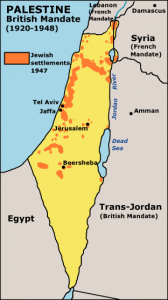 region and allow the British to continue practicing their characteristic divide-and-rule policy or, at the very least, sit back in one of their strategic outposts and watch the region destroy itself. The fruits of this policy are tasted even today, as the Israeli issue has remained the primary Mideast stumbling block since its inception.
region and allow the British to continue practicing their characteristic divide-and-rule policy or, at the very least, sit back in one of their strategic outposts and watch the region destroy itself. The fruits of this policy are tasted even today, as the Israeli issue has remained the primary Mideast stumbling block since its inception.
Strategic Outposts:
Although the UK withdrew from Palestine in 1948, it most certainly did not withdraw from the Mideast, having retained important military facilities in the strategic outposts of Cyprus, South Yemen (the Port of Aden), and Bahrain. In fact, such outposts did not have to be physical, as the financial outpost of Persia (embodied by the Anglo-Persian Oil Company, now BP) clearly demonstrated. Each of these pivotal locations on the regional periphery allowed the UK the opportunity (whether or not it fully took advantage of it, and when it did, to questionable success) to intervene within the region without having to support and protect thousands of soldiers based in a vulnerable location like Palestine.
Limited and Selective Interventions:
Finally, the UK took the prerogative of engaging in specific interventions when it saw fit, ranging from the disastrous 1956 Suez Canal Intervention and failed support of South Yemen’s government to the successful counter-insurgency practiced during Oman’s Dhofar Rebellion. In each case, the UK showed that it was still an important military actor in regional affairs, and it sought to defend what it viewed to be its national interests in each respective intervention. Suffice to say, although the UK was increasingly being squeezed out of the Mideast, it did not leave in peace and continued to prolong the painful process leading up to the ‘East of Suez’ moment and its consequent regional (non-Cypriot) withdraw in 1971.
Following In Elder Brother’s Footsteps
The US has learned a thing or two from the UK and is currently engaged in adapting the abovementioned strategies to its own circumstances:
Supporting Saudi Arabia And Christening Kurdish Statehood:
The US one-upped the UK by creating two Chaos Initiators in the Mideast through its support of the anti-Muslim state of Saudi Arabia (and its ISIL proxy) and its midwifing of Kurdistan, a geopolitical Israel, in order to advance its strategy of the Eurasian Balkans. Addressing the Saudis, they are fiercely sectarian and promote an extreme interpretation of Islam called Wahhabism (falsely referred to as a branch of Sunnism) that conflicts with the teachings adhered to by the overwhelming majority of the world’s Muslims. Riyadh’s ‘proselytization’ has taken the form of brutal warfare waged against all Islamic denominations, be they Sunni, Shia, Alawite, or any other, which has created a divisive sectarian war that has inaccurately been described as Sunni versus Shiite. Although vestiges of conflict do exist 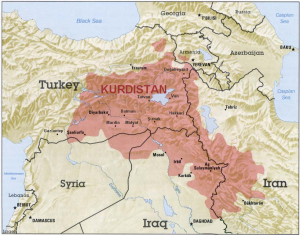 between both major sects, the real sectarian war is being waged between Saudi Arabia’s extreme Islam and the rest of the world’s conventional Islam, which has deepened the Mideast rift way beyond the point of Israel versus the Arab states and into an Arab-versus-Arab fratricidal bloodbath.
between both major sects, the real sectarian war is being waged between Saudi Arabia’s extreme Islam and the rest of the world’s conventional Islam, which has deepened the Mideast rift way beyond the point of Israel versus the Arab states and into an Arab-versus-Arab fratricidal bloodbath.
Concerning the Kurds, the US ambition is to create a pro-American geopolitical Israel in the heart of the Mideast. What is meant by this is that it wants to manipulate the political map to forge a new country out of previously existing ones, each of which are non-Western (Iran and Syria) or moving away from the Western consensus to various degrees (Turkey and Iraq). More than likely, this pro-American outpost (in whichever geographic form it takes) would become the geopolitical focus of Mideast affairs after its creation, since the destabilizing effect it would have on each of its neighbors could allow for plenty of Pentagon-advised proxy wars to take off in the area, each to the US’ own benefit. Kurdistan, pressed in all directions between hostile states, would then depend even more deeply on US support than ever before, which would then allow it to indirectly promote the US’ regional political vision without the need for thousands of American troops to do this instead.
Lead From Behind:
Just as the UK depended on strategic peripheral outposts to retain influence in the Mideast, so too does the US. Kuwait serves as the US Army’s garage, Bahrain as the Navy’s dock, and Qatar as its Air Force hangar. This string of installations sits neatly between Saudi Arabia and Iran, allowing the US to project full spectrum military force in either direction, be it to protect the Saudis or to attack the Iranians. By simply retaining these strategic bases, it doesn’t need over 100,000 troops in Iraq to show that it remains the predominant military power in the Mideast.
Taking matters a step further, the US has lately been practicing the policy of ‘Lead From Behind’, whereby it essentially outsources its military grunt work to proxy actors that have a mutually perceived benefit in carrying out such tasks under Washington’s supervision and limited intervention. Regionally speaking, this working is most clearly epitomized by the Gulf Cooperation Council (GCC), which functions as a Mideast NATO of sorts in destabilizing Iran. It is also led by Saudi Arabia, which perfectly correlates to the US’ previously mentioned plan of initiating chaos in the wake of its ‘withdrawal’.
Pick-And-Choose:
While the UK practiced standard ground interventions after its Mideast ‘withdrawal’ in 1948, the US has taken advantage of 21st-century advances in military technology and instead opts mostly for selective aerial bombardments. It occasionally uses drones to strike targets in Yemen and it’s currently involved in a very subjective bombing campaign against ISIL in Iraq and Syria that at times fails to target terrorists at all. Instead of partaking in direct wars like the British did in Yemen and Oman, the US is handling its business indirectly in Iraq through training the Iraqi Army, Kurdish Peshmerga, and Sunni militias as stand-in proxies for its military interests. The Pentagon is picking and choosing where and how to intervene in the region, thereby giving it the maximum flexibility for offensive operations that it lacked when it occupied Iraq and was continually on the strategic defensive.
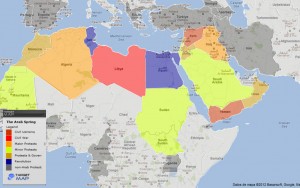
On the asymmetrical front, the US prepared the ‘Arab Spring’ Color Revolutions with the intent of selectively overthrowing non-Western governments (Libya, Syria) and guiding inevitable leadership transitions in key states (Egypt) throughout the region. This pick-and-choose approach removed all preconditions when it came to regime change within the targeted states, however, as the US threw its weight behind any and all anti-government groups there, including extreme Islamic ones such as the Muslim Brotherhood in Egypt and ISIL in Syria.
It is important to note that both the conventional and asymmetrical approaches, however, are decidedly more indirect than the standard invasions and occupations that the US has become known for. In this way, the 2011 ‘retreat’ from Iraq may have actually allowed the US more leeway in exercising its influence beyond the strict confines of conventional military power and helped it ‘cut the fat’ off of its force it make it more ‘lean’ and effective. Put another way, this is the logical evolution of the UK model, which the US expanded upon and modified by incorporating the hard-fought and costly lessons of the British experience.
Crashing The Party
The British were in for a rude awakening when they found that they couldn’t macro-manage the Mideast, and they eventually withdrew in 1971 during their ‘East of Suez’ moment. The US may also experience something similar whereby its intended Mideast ‘management’ strategy doesn’t go as anticipated, but unlike the British who withdrew in response to this (and other reasons), the US may inversely deepen its involvement and get sucked into the same ‘Reverse Brzezinski’ trap it typically sets for others. These are the three scenarios that could make that happen:
The House Of Saud Collapses:
The possibility that the House of Saud will collapse just as unexpectedly as a house of cards mustn’t be discounted, especially considering the inherent instability of the governing authorities. The line of Saudi succession is marked with senior citizens, which makes it susceptible to multiple crises if there’s a ‘death spree’ like that which the Soviet Union experienced in the early 1980s. Another issue is that ISIL may have grown too powerful for its caretakers and could turn against them (or already have done so) and wreak havoc inside the Kingdom if given the opportunity. The last pillar of destabilization upon which the House of Saud rests is the oppressed Shia minority that largely resides in the oil-rich Eastern Province. The arrest and execution judgement imposed on Shiite Sheikh Nimr al-Nimr means that this demographic may once more rise up for their rights and demonstrate against the government if the sentence is carried out. Anticipating this development, the Saudis implemented new ‘anti-terror’ legislation in early 2014 that basically criminalized all forms of dissent, in what was likely a pre-emptive move to ‘justify’ a crackdown on this community in the future. Altogether, these three factors contribute to the instability swirling around the House of Saud, and if any of them occurs (let alone in combination), then it could spell the rapid collapse of the Saudi state.
The Resistance Arc Reborn:
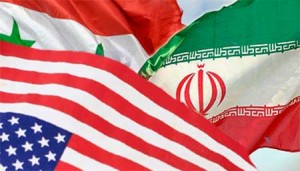
Syria and Iran have long been Resistant & Defiant (R&D) countries in opposing the US, and their strategic relationship was geographically bridged by Maliki’s Iraq during his tenure as Prime Minister. With the US’ soft coup against him and its simultaneous strengthening of Kurdistan, it appeared as though this R&D network would be severed once more. This doesn’t have to be the case, however, as the foregone conclusion of Kurdish statehood (in whichever form it takes) could potentially be ‘flipped’ by Iran and co-opted to pursue R&D objectives. If Tehran can succeed in deepening its ties with Kurdistan past the level of military support and into a type of strategic partnership, then it might potentially replace the US as the Kurds’ primary external patron, which could then give it influence over this transnational sub-state and the countries that it extends into, thus geographically resurrecting the Resistance Arc between Syria and Iran via Iraq (Kurdistan). If played properly, Iran could also come to guarantee the restraint of Kurdish nationalism, which would not only stabilize the region, but would also earn it leverage over Turkey that could then be extended towards helping Ankara along the non-Western path that it has recently embarked on.
A Qatar-Saudi Cold War Redux:
The final scenario that could realistically offset the US’ Mideast plans would be a resumption of the Cold War between Doha and Riyadh over the Muslim Brotherhood. Although recently and unexpectedly patched up last month, if it just as unexpectedly reoccurs (perhaps over Oman), then it would break the GCC unity that the US has tried so hard to resolidify. Although it could potentially be mitigated by a coup or ‘Arab Spring’ Color Revolution in Qatar, if this fails, then the country could join Iran in being targeted by the GCC. This would place the US in the uncomfortable position of having two major bases in the GCC (Kuwait and Bahrain) and one outside of it in a newly ‘hostile’ state (Qatar), thereby guaranteeing a stressful balancing act between the two in helping to mend the major rift. It’s impossible to forecast whether Qatar would move closer to Iran as a result and what the future of the US presence in the country would be, but if Washington can’t succeed in regime change against a recalcitrant Qatar, then it will certainly watch its regional GCC order slowly collapse in some way or another, which would disrupt one of its major Lead From Behind applications in the world.
Concluding Thoughts
The British ‘withdrawal’ from the Mideast didn’t occur in 1948 but rather in 1971, and it was a long, drawn-out process that was delayed by the retention of strategic outposts and the invocation of selective interventions. Likewise, the US appears to be doing something similar, seeing its 2011 Iraqi withdrawal as a valuable opportunity to ‘trim the fat’ on its regional military footprint while making for a more ‘lean’ and efficient deployment of unconventional (but equally influential) force. Whereas the British eventually faced their ‘East of Suez’ moment, it may be that the technological and strategic applications of force projection in the 21st-century could indefinitely prolong American hegemony in the Mideast via the lessons learned from the British experience, provided that the Black Swans of a Saudi collapse, a Kurdish flip, or a Gulf Cold War redux don’t happen first.

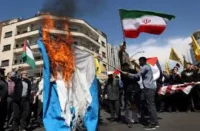




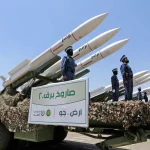







The United States Department of Defense(DOD)
announced today 08Jan2015 — an European Infrastructure Consolidation.
The U.S.European Military Command is being re-aligned
http://www.openeyesopinion.com/european-infrastructure-consolidation-actions-eic/
Fabulous article! So true.
Pingback: Strategic scenarios surrounding prolonged Kurdish insurgency in Turkey (I) | Oriental Review
Pingback: Strategic Scenarios Surrounding Prolonged Kurdish Insurgency in Turkey « Counter Information
Pingback: “The New Middle East”: Russian Style (IIA) | Oriental Review
Pingback: Map Of Kurdistan – George Duarte
Pingback: Map Of The World Kurdistan – Kristamarie